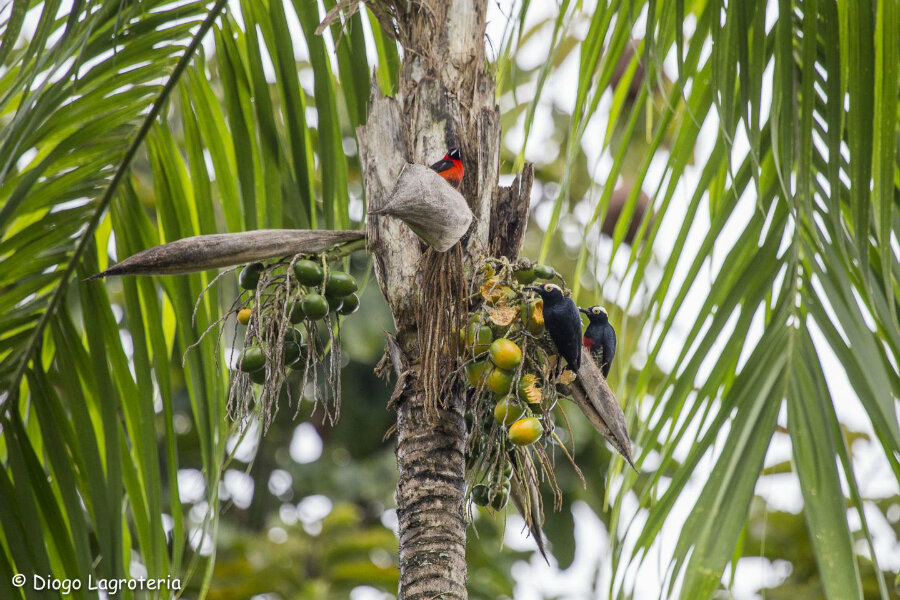Can a new study on trees change the conversation about Amazon conservation?
Loading...
The Amazon has long been seen as a pristine wilderness. But indigenous peoples have lived in the verdant forest for millennia, and their actions profoundly influenced biodiversity in the region, a new study finds.
In research published Friday in the journal Science, the study’s authors explain that the most abundant trees today seem to be the ones that were cultivated by the people who lived in the area before Europeans arrived around five centuries ago. Building on their 2013 research, which identified “hyperdominant” species in the Amazon basin and neighboring Guiana shield, they took known archaeological sites and overlaid them with a map showing the locations and densities of domesticated species. The closer the researchers got to a site where people had previously settled, the more abundant the domesticated species were.
The research contributes to an evolving understanding of the impact ancient peoples had on the world’s largest and most biodiverse forest. It may also, the researchers suggest, spur a greater commitment to protecting the Amazon – and provide a roadmap for sustainable cultivation.
“We can use this as an opportunity to reduce the impacts of deforestation,” lead author Carolina Levis, a PhD student in ecology at Brazil's National Institute for Amazonian Research and Wageningen University and Research Center in the Netherlands, told The Atlantic. “Now we have huge plantations of soybeans that are destroying the Amazon – while in the forest we have lots of plants that can be used while maintaining the forest as it is.”
In 2013, this group of researchers identified a group of tree species that dominated the Amazon. Half of all trees in Amazonian forests come from just 227 species, they reported, according to Science Magazine. Since so many of those species are known to be used by local people, such as the Yanomami of northern Brazil, for food, fuel, and construction, the researchers began to wonder whether the abundance of these trees was a result of deliberate cultivation by people.
They produced a list of 85 species that showed signs of domestication, like larger fruit, and found that they were five times more likely to be dominant in mature forests. That dominance only became more pronounced when the researchers started looking at places of past occupation.
Across more than 3,000 archaeological sites where ancient peoples are known to have settled, domesticated species such as the Brazil nut, cacao, rubber, and cashew were particularly common.
“I was actually a bit stunned,” ecologist and study author Hans ter Steege of the Naturalis Biodiversity Center in Leiden, the Netherlands, told Science Magazine. “The effect of Pre-Columbian people is much more pronounced than many of us believed.”
But though the domesticated trees were central to the livelihoods and economies of pre-Columbian peoples, they may not be wholly responsible for the cultivation, other naturalists counter.
“It’s quite well known that ancient people and modern people both settle in similar areas,” Crystal McMichael, a palaeoecologist at the University of Amsterdam, told Nature. With that in mind, more modern groups may have had an equally significant impact.
Mark Bush, a biogeographer at the Florida Institute of Technology in Melbourne, Fla., agreed that some of the cultivation could have been more recent – or even accidental. In Central America, he told Nature, Brosimum trees are commonly found at Mayan sites, and people thought for a long time the Maya had planted them. In fact, the Brosimum trees recolonized Mayan sites when the Maya were no longer there.
Whatever the vintage of these trees, looking at tree concentrations may help archaeologists rediscover places where people once lived, the authors hope.
“It would be very cool to use the plants to detect new sites because archaeological sites are sometimes difficult to find in the forest,” Ms. Levis told the Los Angeles Times.
And that possibility may encourage people to think about conserving the Amazon as a historical entity, rather than for purely environmental reasons.
“People want to preserve pristine forests for conservation and to preserve life,” Levis told Nature. “But if this is true, if people enriched the forests by domesticating palms, that is also a cultural artefact.”








